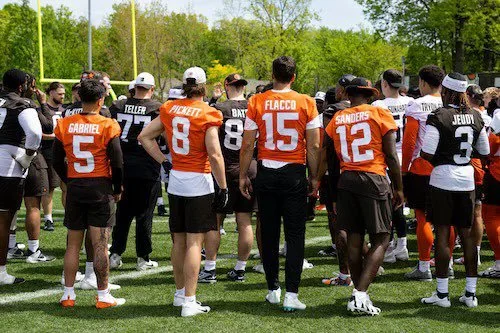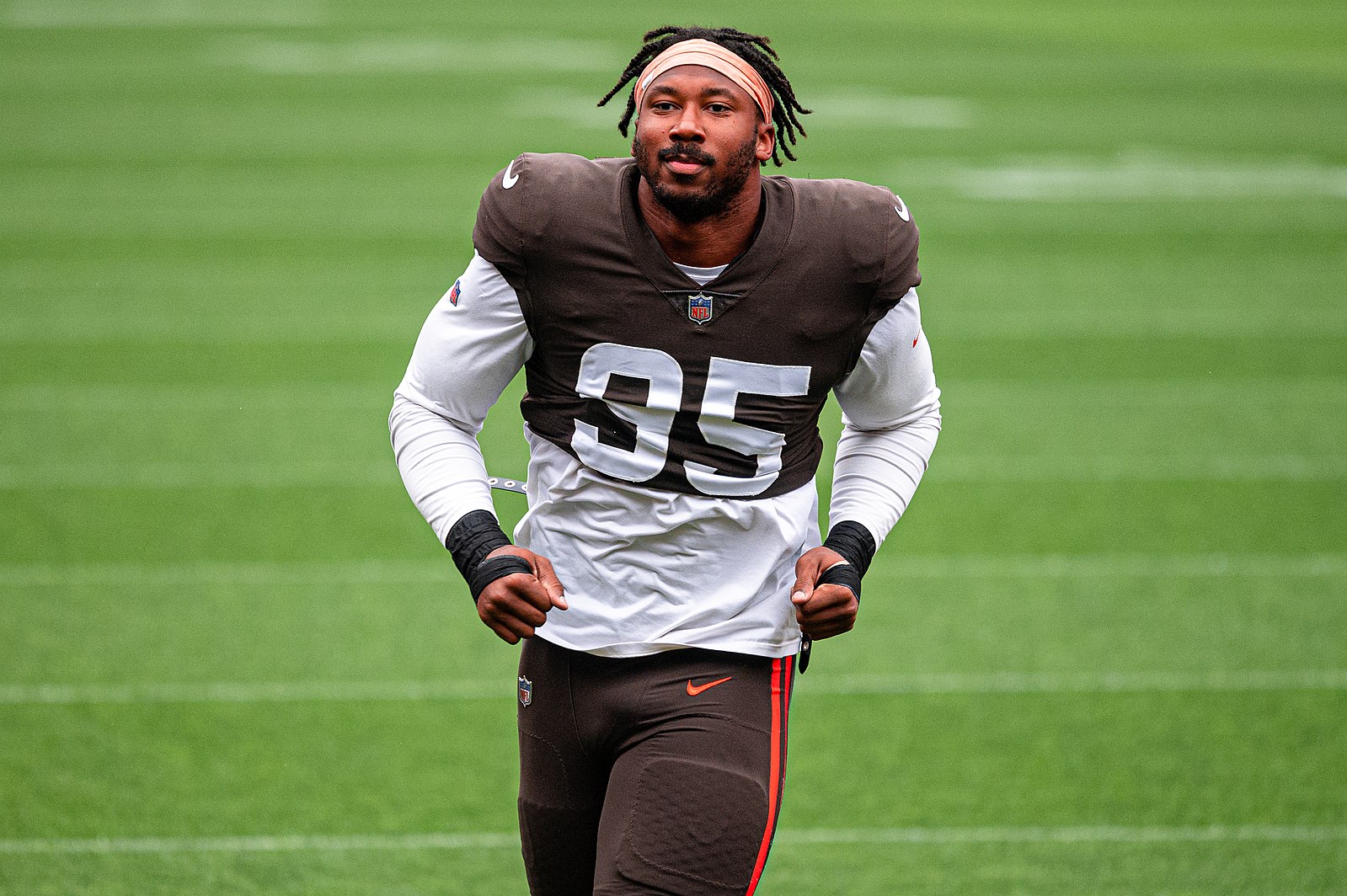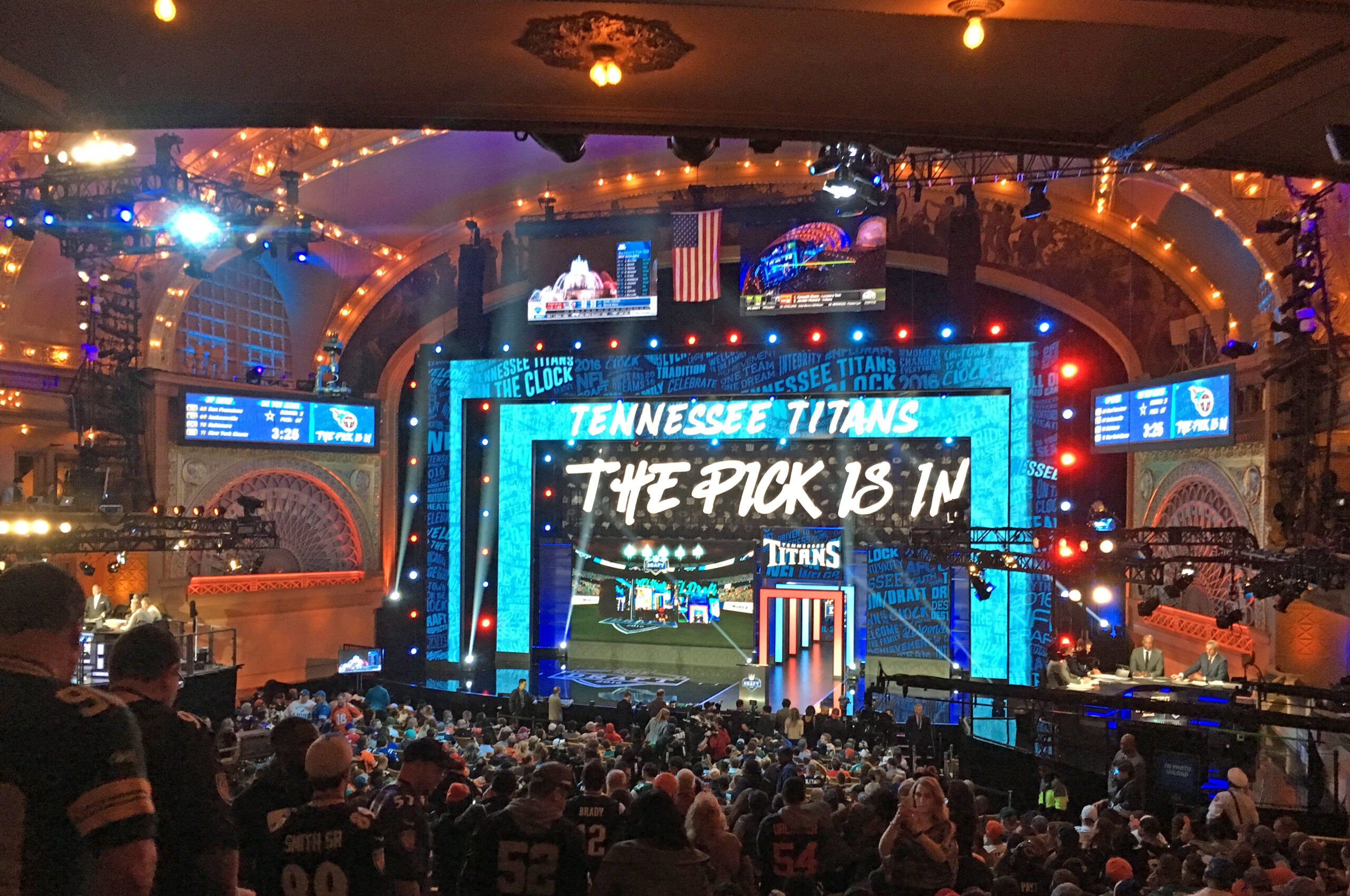The 2025 Cleveland Browns are a conundrum.
By all accounts, the team should be pretty bad. They won a total of three games in 2024 while posting some historically bad numbers on offense. Overall, the team looked lackluster right from the start of the preseason, as if even the players knew they were on a sinking ship. Personnel-wise, most of the team and coaches were brought back for 2025, and the team is still in salary cap hell, thanks to the albatross that is Deshaun Watson.
However, the 2024 Cleveland Browns were pretty similar to the 2023 Cleveland Browns, and that team won 11 games en route to the playoffs. They posted one of the best defenses in the history of the league, and the 2025 edition features much of the same personnel. If anything, the defensive unit on paper might be better than the 2023 version, with a scary defensive line, and only one major hole at free safety (2023’s free safety, Juan Thornhill, proved to be such a poor fit that we might as well count him as a hole for that season too). Cleveland’s offensive line is also relatively similar, if two years older. Like with Thornhill, Cleveland benefits from the departure of offensive tackle Jed Wills, who was just awful.
Will 2025 be like 2023… or 2024?
So, what will the 2025 version of the team look like? Most people are writing the team off already. Some, like myself, see a team that is better than the three wins of 2024, and potential for significant improvement (although the schedule gods were not kind to the Browns, but more on that in another post).
However, as it so often does in the NFL these days, the buck stops with the quarterback. And, as it so often does in Cleveland since the departure of Bernie Kosar in the mid-90s, quarterback is the biggest question mark for the brown and orange. Cleveland enters the last phases of their offseason prep with a four-man quarterback competition. Which makes for some interesting discussions, but in general, is not ideal for a lot of reasons.
First and foremost, the biggest problem with a four-header competition means that the first team offense does not have a consistent arm or mind in the huddle. That makes timing with the center and receivers, as well as the handoffs to the backs, more difficult, as each quarterback will do things slightly differently. For the quarterback, instead of having, say, 60-70% of their snaps with the same people, it’s 25% at best. This means whoever does win the competition will have to work three times as hard later in camp to make up for those missing reps.
Given that two of the four competitors are rookies, that is all the more challenging. Let’s look at those vying for the job.
Joe Flacco
Joe Flacco is one of the biggest reasons that the 2023 Cleveland Browns had their amazing late-season run. He joined the team after Cleveland’s quarterback room was decimated by a strange shoulder injury to Watson and a concussion to then-QB2 Doran Thompson-Robinson. Flacco lost his first start, just 10 days or so after joining the team, but then reeled off four straight wins in December while throwing for 13 touchdowns and averaging over 300 yards a game. Flacco was named the NFL’s Comeback Player of the Year for his efforts (despite Flacco’s own endorsement of Damar Hamlin).
But the team’s braintrust decided to design a new offense for 2024 that they thought would be a better fit for their quarter-billion-dollar man in Watson. That offense, unfortunately, was not a good fit for Flacco, so he was allowed to depart for the Indianapolis Colts. 2024’s offense – based on the spread philosophy favored by one-and-done offensive coordinator Ken Dorsey – was a massive disaster. Watson looked god-awful for seven games until he tore his Achilles. The spread experiment was jettisoned as soon as the season ended, and a return to the Stefanski play-action system also meant a return to the best quarterback of the 2023 playoff season in Flacco.
Will Flacco be able to recapture the magic he brought to the team two years ago? Almost certainly not. One of the biggest things that the NFL hates his last-minute change that veers away from recent patterns. The 2024 Cleveland Browns had just three wins, but one of those came against the juggernaut Baltimore Ravens in the first start for quarterback Jameis Winston, who came off the bench and dropped 300 yards of air on Cleveland’s arch-rival. A similar situation took place in Flacco’s magical run in 2023. Combine that with a very weak schedule, and magic!
Flacco was badly exposed in the playoff game against Houston. He was never very mobile, but at age 40, whatever little mobility he had in his prime is gone. He still has a huge arm that sometimes has touch, sometimes does not. He’ll throw a lot of interceptions, but also a lot of yards. It’s clear that Flacco gets Stefanski’s offense in a way that neither Watson nor his predecessor, Baker Mayfield, ever did. In all, it’s a big positive to the team to have Flacco back in the fold, but he’s also a better fit as a backup and spot starter, rather than the long-term QB1.
Kenny Pickett
The only other quarterback on the Cleveland Browns with any NFL experience is Kenny Pickett, who also enters camp as the signal-caller with the best odds of winning the starting job. A first-round pick for the Pittsburgh Steelers in 2022, Pickett was expected to be the heir apparent to future Hall of Famer Ben Roethlisberger. Instead, he washed out in just two seasons and was dumped to the Philadelphia Eagles in 2024. Cleveland traded for Pickett after he won a Super Bowl backing up Jalen Hurts. On his third team in just four NFL seasons, Pickett will look to rebuild his career on a team hoping they don’t have to completely rebuild after this season.
On paper, Pickett looks like a solid choice on whom to take a flier. Three inches shorter and 15 pounds lighter than Flacco, Pickett is nevertheless cut from the same gunslinger mold. His arm strength is unquestionable – he can make just about every throw on the field, including the coveted deep out. He also has the athleticism Flacco lacks. While not a pure running quarterback like Lamar Jackson, Pickett can scramble and make the odd off-balance throw.
However, none of that has translated to success on the field. Flacco threw for as many touchdowns in December 2023 – 13 – as Pickett did in 2022 and 2023 combined. He did a decent job in avoiding turnovers, but his competition percentage of 62.5% in those two seasons was poor in today’s throw-first NFL where anything under 70% is suspect. Though he does have the arm strength in practice, this seldom translated to the field where he looked just… uncomfortable.
Kenny Pickett launched himself into the first round thanks to a jaw-dropping improvement in 2021 – he went from tossing 13 touchdowns in 2020 to 42 in 2021. Often, these one-year quarterbacks are perceived to be closer to ready for prime time than they actually are, which leads to them seeing the field faster than they should have. Pickett should have sat on the bench for at least two NFL seasons behind an established starter, maybe three.
Unfortunately for Pickett and the Browns, these quarterback reclamation projects seldom end well – once confidence is lost, it rarely returns. Stefanski’s offense is also not terribly forgiving, as it has only been run effectively by Flacco and Kirk Cousins in Minnesota. But it will be interesting to watch Pickett’s progress.
Dillon Gabriel
The Cleveland Browns raised some eyebrows with the selection of Oregon Ducks quarterback Dillon Gabriel in the third round of the 2025 NFL Draft. Not only was perceived first-round prospect Shedeur Sanders (more on him later) still on the board, but Gabriel was ranked by most as a third-day prospect, as a late fourth or early fifth-round choice.
Pickett and Flacco are taller, heavier, upright quarterbacks with big arms who don’t often have the best touch on the ball. Gabriel is almost the polar opposite – right down to the fact that he is also left-handed, an often bigger issue than most outside the NFL sometimes realize.
Gabriel is small. He’s listed at 5-11, which means he’s probably more like 5-9 and a half (height numbers often are slightly inflated for those below average). His listed weight at 205 pounds doesn’t match the visual – he looks more like 190, with a slight frame that is closer to departed QB2 Thompson-Robinson than that of the two experienced QBs on the roster.
None of this is problematic on its own, except that it’s been pretty well proven that the best quarterbacks in Stefanski’s system are tall players with big arms who push the ball down the field. Gabriel, on the other hand, worked in a system designed for short passes, including 25% behind the line, according to PFF.
NFL.com’s draft profile also has this eye-opening observation: “Lacks arm strength to lead receivers on deep shots off play-action.” THAT is scary for a Stefanski quarterback, as Stefanski’s system is purely designed for deep shots off of play action.
All of that said, Gabriel is a pretty consistent winner. He’s played for three different major college programs and his teams have always won, getting better in the second season each time. His last two seasons, first at Oklahoma and then Oregon, Gabriel averaged over 70% completion with 60 touchdowns against 12 interceptions. Those are solid numbers, and especially impressive that he achieved them in two different systems.
Yet, I’m at a loss to understand this choice. I’ve long suspected that General Manager Andrew Berry uses a different metric to evaluate his quarterbacks than Stefanski, which is a signal of internal dysfunction. Look at Watson. He was a proven all-star in Houston. But after bringing him to Cleveland, paying three first-round picks and a quarter-billion guaranteed, the team has admitted multiple times that he does not fit in Stefanski’s system. Ditto Dorian Thompson-Robinson, who, like Gabriel, is probably too slight for the NFL.
Shedeur Sanders
Enter perhaps the most confounding story in NFL Draft history. After taking Gabriel, the Cleveland Browns found themselves in the unique position of being able to snag a quarterback with a first-round (or at least high second-round) draft grade in the fifth. Shedeur Sanders is the son of NFL Hall of Famer Deion Sanders. He was expected to be drafted in the first round, by many in the Top 10, perhaps as high as No. 2 overall… to the Cleveland Browns.
That didn’t happen. Instead, Sanders fell all the way to the Browns in the fifth round. Reports vary as to why, though the best consensus seems to be the way Sanders conducted himself in his pre-draft meetings. I’ve seen reports that range from simple overconfidence, bordering on brashness to outright refusing to be put through the paces. Was it all teams? Some teams? One team? One scout? Hard to say. The NFL scouts gossip more than a bunch of old grandmas in a sewing circle, so I could see this going any number of ways.
What these reports generally do not cover is Sanders’ on-field production or athletic gifts, which are considerable. Physically, he’s much closer to the Stefanski mold, standing a shade under 6-2 and weighing in at 212. He’s not a big runner, but more of the upright, confident gunslinging type. In 2024, he posted an eye-popping 74% completion percentage, with 37 touchdowns against 10 interceptions.
Sanders is cut from the same mold of his father, and is confident well beyond the point of arrogance. Where his father could (almost) always back it up, the jury is still out on the son. Right now, Sanders takes a little too long in the pockets and takes big sacks. A lot of his completions in college would be interceptions against the better talent that the NFL provides. It also remains to be seen how good he can be without Travis Hunter, the 2024 Heisman winner that the Browns passed up at No. 2 overall in favor of a huge trade-down package and a major upgrade at defensive tackle.
It may be possible that the unprecedented draft fall and landing on the back of the bench for the Cleveland Browns is the best thing for Sanders. The humbling process is certainly what the kid needed, and to get it so early rather than mid-career like others (see Mayfield, Baker) could be a boon. In addition, he now joins a team with little expectations and few for him as well. However, his physical gifts and game fit very well with the Stefanski style (if not maybe what Andrew Berry seems to look for).
Sanders seems the least likely of the four to start on opening day, but depending on how things go, he could well be in the mix for a mid to late-season replacement. If it comes to the point where the Browns look like they’ll be drafting in the Top 10 however, Sanders will be under pressure to perform sooner than later… or else risk finding himself on the bench behind a quarterback the Browns snag at the top of the draft.



